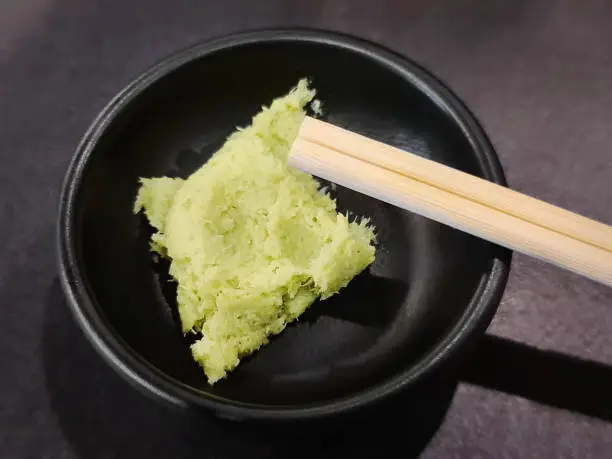Nori, the vibrant seaweed that wraps our favorite sushi rolls and adds a delightful umami flavor to various dishes, is more than just an ingredient. It’s a culinary staple with roots in Japanese cuisine, adored by many around the world for its versatility. However, if you’ve ever bitten into what you thought would be a crispy piece of nori only to find it chewy instead, you’re not alone. The texture can sometimes take us by surprise.
But what gives nori its chewy nature? Is it always supposed to be like that? Whether you’re preparing sushi or snacking on seasoned sheets straight from the package, understanding why some nori turns out chewy can help enhance your culinary experience. And fear not! There are ways to revive those chewy sheets and make them crisp again.
Join us as we explore the fascinating world of nori—from its uses in cooking to tips for storing it properly—and learn how you can enjoy this delicious seaweed at its best!
Why is Some Nori Chewy?
Nori, the beloved seaweed used in sushi and snacks, can sometimes present a surprising texture. When you bite into it, why does some nori feel chewy?
The primary reason for its chewiness stems from moisture content. If nori absorbs humidity from the air or isn’t stored properly, it becomes soft and pliable instead of crisp.
Another factor is the quality of the nori itself. Lower-grade varieties may lack that delightful crunch and become tougher over time.
Furthermore, how it’s processed matters too. Different drying techniques can influence its final texture; if not dried adequately after harvest, you might end up with chewy sheets.
Understanding these elements helps when selecting your nori for culinary adventures.
Factors that Affect the Texture of Nori
The texture of nori can vary significantly based on several factors. One primary influence is moisture content. If nori absorbs humidity, it becomes soft and chewy rather than crisp.
Harvesting time also plays a role. Nori collected at different growth stages may have distinct textures. Younger seaweed tends to be more tender, while mature varieties can be tougher.
Processing methods affect the final product too. The way nori is dried or toasted impacts its crunchiness. Over-toasting can make it brittle, while under-drying leaves it chewy.
Storage conditions are critical as well. Exposure to air can lead to sogginess or loss of crispness over time. Proper sealing in airtight containers helps maintain that delightful crunch longer.
The quality of the seaweed itself cannot be overlooked; premium grades generally offer better texture and flavor profiles compared to lower-quality options available in stores.
How to Make Chewy Nori Crispy Again
To revive chewy nori, start by preheating your oven to a low setting, around 250°F (120°C). This gentle heat will help reintroduce crispness without burning the delicate seaweed.
Next, lay the nori sheets flat on a baking tray. Ensure they don’t overlap; air circulation is key for even drying. Pop them in the oven for about five minutes. Keep an eye on them; they can go from crispy to burnt quickly.
Alternatively, you can use a skillet over medium heat. Place one sheet at a time directly onto the dry pan and toast it for about 30 seconds per side. This method adds a lovely toasted flavor too.
After removing from heat, let your nori cool completely before using it again. The texture should be much crisper now and ready to enhance your dishes beautifully!
Alternative Ways to Use Chewy Nori
Chewy nori can be a delightful ingredient beyond sushi rolls. Tear it into smaller pieces and toss it into salads for an umami boost. The texture adds an unexpected crunch, giving your greens a flavor lift.
If you’re feeling adventurous, consider using chewy nori to wrap snacks. Fill it with avocado and cucumber or even cream cheese for a quick bite. It’s perfect for on-the-go munching.
You can also blend chewy nori into soups or broths. Just rip it up and let it soak in the warm liquid to enhance flavors while adding nutritional benefits.
For those who enjoy experimenting in the kitchen, why not make savory nori chips? Cut the chewy sheets into triangles, season them lightly, then bake until crisp. This makes for a fantastic snack that pairs well with dips like hummus or guacamole.
Tips for Storing and Preserving Nori
To keep nori fresh and prevent it from becoming chewy, proper storage is key. Start by sealing the sheets in an airtight container. This helps to block out moisture that can make nori lose its crispness.
If you have leftover opened packages, consider using zip-top bags. Squeeze out as much air as possible before sealing them up tightly.
Store your nori in a cool, dry place away from direct sunlight. A pantry or cupboard works well for this purpose. Avoid storing it near heat sources like stoves or ovens; excess warmth can affect its quality.
For long-term preservation, you might even refrigerate or freeze it. If you choose to freeze nori, ensure it’s wrapped securely to avoid freezer burn.
Remember always to check for any signs of spoilage before use! Properly stored nori can last several months without losing its delightful flavor and texture.
Conclusion: Enjoying the Versatility of Nori
Nori is a unique ingredient that offers a range of culinary possibilities. Whether you enjoy it in sushi, as a snack, or incorporated into various dishes, its versatility cannot be overstated. Understanding why some nori becomes chewy can help you appreciate the nuances of this seaweed product even more.
When faced with chewy nori, remember there are simple solutions to restore its crispy texture. With just a few tips and techniques at your disposal, such as using an oven or air fryer for crisping up the sheets, you’ll find that your favorite seaweed snacks can easily return to their original form.
Additionally, don’t hesitate to embrace creative ways to use those chewy sheets. They can still contribute flavor and nutrition when added to soups, salads, or stir-fries—transforming what might seem like a setback into an opportunity for experimentation in the kitchen.
Storing and preserving nori properly ensures that you get the best experience from this wonderful ingredient every time you reach for it. By keeping it dry and sealed away from moisture and light exposure, you’re setting yourself up for success in all your future culinary endeavors.
Embrace the journey with nori; it’s not just about perfect texture but also about creativity and enjoyment in each bite!



